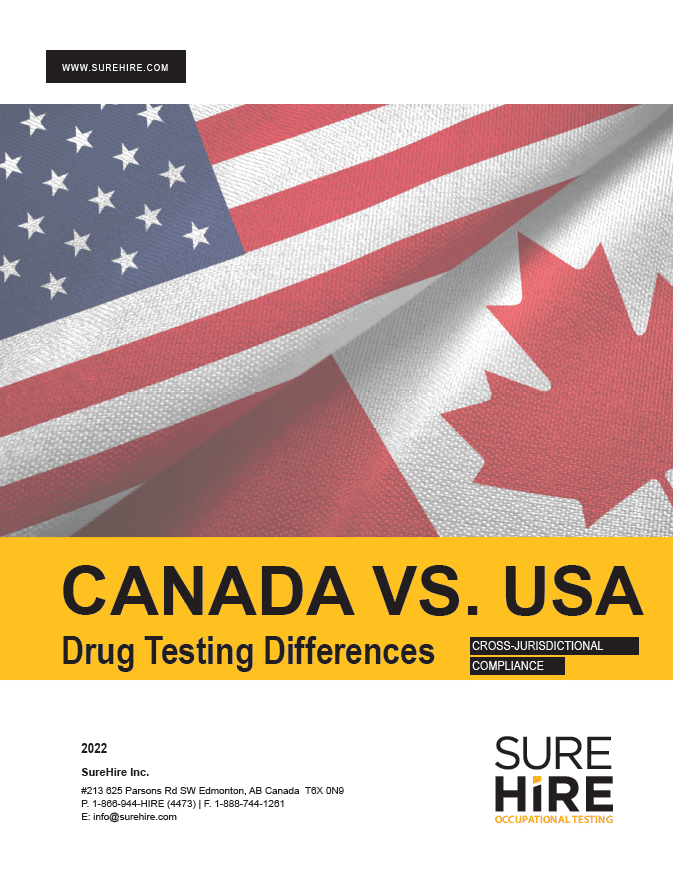TAKEAWAY: Knowing and understanding exposure limit terms can help employers make decisions that keep their workers safe and healthy. This article discusses seven essential exposure limit terms that all employers should know.
Jump Ahead
Exposure limits help protect employees from dangerous levels of hazardous substances, such as chemicals, dust, mist, gases, fumes, or even radiation. Organizations such as the Occupational Safety and Health Administration (OSHA) in the United States establish these limits.
Occupational Exposure Limit (OEL)
An Occupational Exposure Limit (OEL) is the level of exposure that a worker can safely endure to a specific substance without experiencing any adverse health effects. Government agencies typically set OELs, based on scientific studies and mathematical models used to determine safe exposure levels.
The OEL for a physical or chemical hazard is usually determined throughout an eight-hour workday. Employees should understand that an OEL value is a maximum limit. It’s always best practice to keep hazardous exposure as low as possible.
Employers are responsible for ensuring workers are not exposed to hazardous substances exceeding OELs. Doing so requires engineering and administrative controls, plus Personal Protective Equipment (PPE) to keep exposure below the OEL. Employers must train workers on OELs and how to minimize exposure to hazardous substances.
OEL is a commonly used term. However, various organizations use other words which essentially mean the same thing as OEL. Some terms refer to legal limits, whereas others are recommendations, as described in the following few examples.

Threshold Limit Value (TLV)
Different organizations use different terms for OELs. The American Conference of Governmental Industrial Hygienists (ACGIH) established Threshold Limit Value (TLV) based on scientific research and data.
TLV is the maximum airborne exposure to a chemical substance considered safe for workers. It establishes safe limits based on possible hazardous exposure for employees over a working lifetime without experiencing ill health effects.
Therefore, TLV considers exposure over an eight-hour day or 40-hour work week and the cumulative effect over the years. Employers must monitor the concentration of chemicals in the air to ensure that exposure levels are below the established TLVs. Regular air sampling and monitoring is the method for monitoring airborne chemical hazards.
Recommended Exposure Limit (REL)
The National Institute for Occupational Safety and Health (NIOSH) is another organization that uses a different term for OELs. They established the Recommended Exposure Limit (REL) as a reference point for employers to use in managing chemical exposures.
Recommended Exposure Limits (REL) represent the maximum amount of chemical exposure an employee can experience in the workplace without a significant risk of adverse health effects. It is important to note that the REL is not a legal limit but a “recommended” exposure limit.
NIOSH primarily established RELs as guidelines for the US Occupational Safety and Health Administration (OSHA) and the Mine Safety and Health Administration (MSHA). However, the recommendations can help employers recognize and control occupational hazards.
Permissible Exposure Limit (PEL)
The Occupational Safety and Health Administration (OSHA) sets the Permissible Exposure Limit (PEL) for hazardous substance exposure in the workplace over an eight-hour day.
Essentially, PEL is similar to REL and TLV, and all are types of OELs. However, PEL is an enforceable OSHA regulation, whereas REL and TLV are not.
One point to note is OSHA hasn’t updated most of their PELs since 1970, despite the evolving information on hazardous substances. OSHA recognizes that PELs are inadequate for protecting workers’ health.
TLV, REL, and PEL have three general sub-categories, described under the following headings.
Time-Weighted Average (TWA)
The Time-Weighted Average (TWA) is a worker’s average level of exposure to an airborne pollutant or hazardous substance over a defined period (usually a workday or workweek). This measurement helps ensure exposure levels stay within regulatory guidelines.
A TWA exposure limit uses the idea of time-weighting, which means the exposure levels are averaged over a specified period to account for fluctuations in exposure concentrations. This approach considers that repeated exposures over time can have a cumulative effect on an employee’s health, even if each exposure may not be significant.
TWA is measured via a worker’s breath sample throughout a workday, for example, eight hours. The total exposure is then divided by eight hours to determine the TWA.
Employers can use TWA limits in the workplace to monitor exposure to chemical substances, such as solvents, or physical agents, like noise or vibration. By regularly monitoring employee exposure levels and comparing them to the TWA limit, employers can identify potential health risks and take necessary steps to reduce exposure levels, such as adding engineering controls or providing personal protective equipment.
Short Term Exposure Limit (STEL)
A Short-Term Exposure Limit (STEL) specifies the maximum exposure to a hazardous substance over a short period, usually 15 minutes. The term STEL is sometimes called Short-Term Exposure Value (STEV).
Unlike the (TWA), which measures the average exposure over an eight-hour workday, STEL limits the amount of exposure over a short time to prevent immediate adverse effects. STEL is an essential tool for industries that involve tasks with high peaks of hazardous substances, such as the chemical industry.
Although not all hazardous chemicals have a STEL, employers should use them when available. Short-term exposure to high levels of a hazardous substance can be dangerous, even if the TWA is within limits.
When results exceed the STEL, it’s mandatory to cease activity immediately until adequate ventilation or protection ensures safe levels of the hazardous substance.
Ceiling Exposure Value (CEV)
A Ceiling Exposure Value (CEV) represents the maximum airborne concentration of a hazardous substance. It’s the highest allowed value of any dangerous substance during any part of the working day.
In other words, employers must immediately reduce employee exposure when the evidence shows concentrations at or above the CEV.
A CEV is valuable for substances that can cause fast-acting or immediate adverse effects, such as irritants and highly toxic gases. This limit offers additional protection beyond what is already provided by other exposure limits, such as the time-weighted average (TWA) or short-term exposure limit (STEL).
You May Also Be Interested In…
- Do You Have Reasonable Suspicion?
 Employers cannot initiate reasonable suspicion testing without first going through the 5-step process. Reasonable suspicion training provides critical information about how to initiate reasonable suspicion testing, including the 5-step process and other tools that employers can use to help manage the misuse of alcohol and drugs in the workplace.
Employers cannot initiate reasonable suspicion testing without first going through the 5-step process. Reasonable suspicion training provides critical information about how to initiate reasonable suspicion testing, including the 5-step process and other tools that employers can use to help manage the misuse of alcohol and drugs in the workplace. - An Employer’s Guide: What You and Your Employees Need to Know About DOT Drug & Alcohol Testing
 When implementing or maintaining DOT Drug & Alcohol testing, there are key areas that employers should consider.
When implementing or maintaining DOT Drug & Alcohol testing, there are key areas that employers should consider. - SureHire Occupational Testing Acquires COHR Health: A Positive Step Towards Safe, Healthy, Productive Workforces and Communities
 We are thrilled to announce that today, May 6, 2024, SureHire Occupational Testing has officially acquired COHR Health, a well-known leader in occupational health services. Read on…
We are thrilled to announce that today, May 6, 2024, SureHire Occupational Testing has officially acquired COHR Health, a well-known leader in occupational health services. Read on… - Occupational Testing Use Case – Mining
 In this case study, we will explore how mining companies can use various types of occupational tests to reduce Total Recordable Incident Rates (TRIR) long term.
In this case study, we will explore how mining companies can use various types of occupational tests to reduce Total Recordable Incident Rates (TRIR) long term. - 9 Strategies to Keep Workers Cool on Drilling Sites During Hot Summer Months
 This article delves into strategies to keep workers cool and safe on drilling sites during the hot summer months.
This article delves into strategies to keep workers cool and safe on drilling sites during the hot summer months. - Hearing Conservation Basics: How to Manage Occupational Noise
 Learn how to proactively mitigate occupational noise risks and help prevent NIHL among workers.
Learn how to proactively mitigate occupational noise risks and help prevent NIHL among workers.

